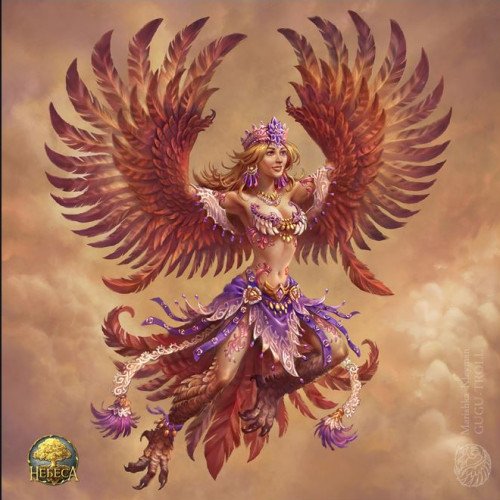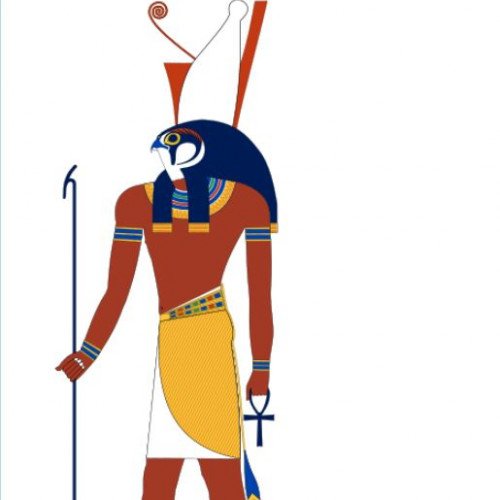Alkonost VS Horus

Alkonost
The Alkonost is, according to Russian mythos and folklore, a woman-headed bird. It makes amazingly beautiful sounds, and those who hear these sounds forget everything they know and want nothing more ever again. She lives in the underworld with her counterpart, the Sirin. The Alkonost lays her eggs on a beach and then rolls them into the sea. When the Alkonost's eggs hatch, a thunderstorm sets in and the sea becomes so rough that it becomes impossible to traverse. She is also the sister of other birds from Slavic mythology, such as Rarog and Stratim.According to folk tales, at the morning of the Apple Feast of the Saviour day, Sirin flies into the apple orchard and cries sadly. In the afternoon, the Alkonost flies to this place, beginning to rejoice and laugh. Alkonost brushes dew from her wings, granting healing powers to all fruits on the tree she is sitting on.The name of the Alkonost came from a Greek demigoddess whose name was Alcyone. In Greek mythology, Alcyone was transformed by the gods into a kingfisher.Alkonost is more likely an individual character, as was noted in some legends about this bird.
Statistics for this Xoptio

Horus
Horus or Her, Heru, Hor, Har in Ancient Egyptian, is one of the most significant ancient Egyptian deities who served many functions, most notably god of kingship and the sky. He was worshipped from at least the late prehistoric Egypt until the Ptolemaic Kingdom and Roman Egypt. Different forms of Horus are recorded in history and these are treated as distinct gods by Egyptologists. These various forms may possibly be different manifestations of the same multi-layered deity in which certain attributes or syncretic relationships are emphasized, not necessarily in opposition but complementary to one another, consistent with how the Ancient Egyptians viewed the multiple facets of reality. He was most often depicted as a falcon, most likely a lanner falcon or peregrine falcon, or as a man with a falcon head.The earliest recorded form of Horus is the tutelary deity of Nekhen in Upper Egypt, who is the first known national god, specifically related to the ruling pharaoh who in time came to be regarded as a manifestation of Horus in life and Osiris in death. The most commonly encountered family relationship describes Horus as the son of Isis and Osiris, and he plays a key role in the Osiris myth as Osiris's heir and the rival to Set, the murderer and brother of Osiris. In another tradition Hathor is regarded as his mother and sometimes as his wife.Claudius Aelianus wrote that Egyptians called the god Apollo 'Horus' in their own language.